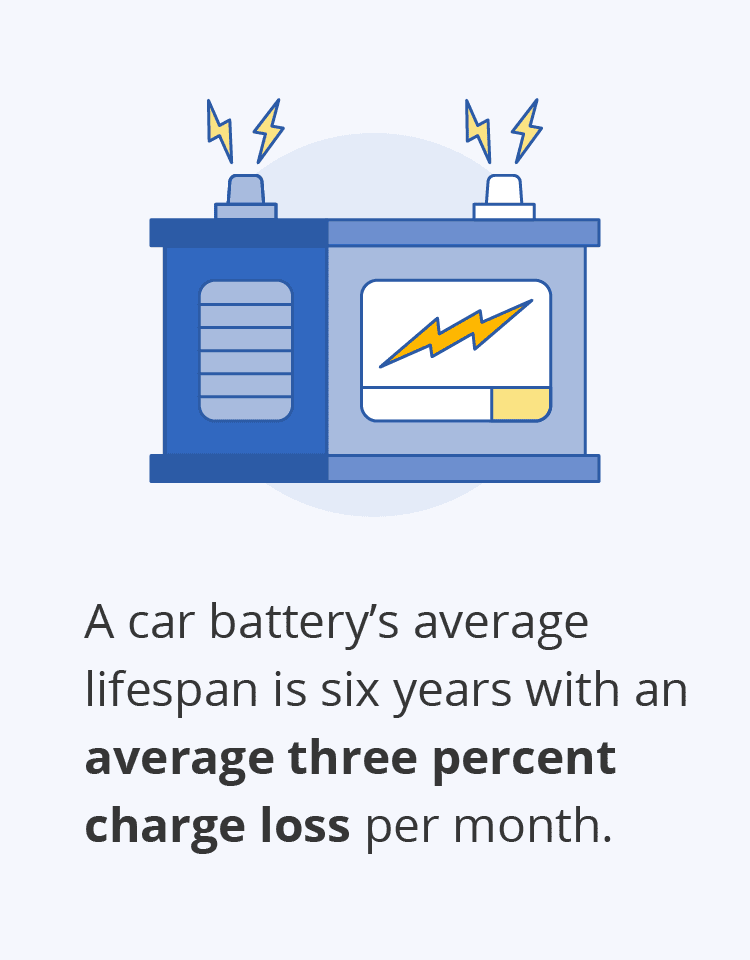Long after the summer car show season ends and the last leaves fall in the autumn, it’s time to clean your garage and start planning for winter car storage.
With an estimated 95 million people in the U.S. facing sub-zero temperatures during the winter months, it’s no surprise that prolonged exposure to the cold can wreak havoc on cars. That’s why knowing how to prepare your vehicle for winter storage is important—especially if you’re a classic car collector or the proud owner of your dream car.
A private garage is ideal, but you can also rent car storage for the season. Before you say goodbye, follow these steps to ensure your car is properly stored and will be ready to ride come spring.
1. Wash Your Vehicle’s Exterior
A good scrub ensures your car is free of salt, dirt, and debris that can corrode or scratch your paint under a car cover. Be sure to clean your wheels, and don’t forget to get the underbody and wheel wells where salt and dirt build up the most.
Once your car is sparkling clean, wax will improve scratch resistance and protect your car from moisture and other elements. It’s also a good idea to wax your wheels and polish any chrome.

2. Detail Your Vehicle’s Interior
Your car’s interior will need a little attention before the long winter, too. Before you break out the console wipes and shop vac, make sure you’ve planned ahead to give your car plenty of time to dry. Storing your car with moisture inside can cause mildew or musty smells to develop.
Remove any food wrappers, crumbs, and sticky spots so rodents and pests aren’t tempted to break in. Once you’re done, consider a new air freshener and a few silica gels or other desiccants to manage moisture.
3. Prevent Pests from Nesting
Rodents can chew through wires or drop diseases in your air filter. Keep bugs out of your garage by treating it with physical traps or poisons to remove any existing critters, and invest in pest prevention.
You’ll want to block any opening a rodent may have in your car by closing vents and covering exhaust pipes with bags. This keeps pests, dust, and debris out. You can also use dryer sheets or repellent scents like peppermint oil inside your car or garage to keep animals at bay.

4. Fill Your Tank with Gas
Auto enthusiasts have different opinions about how to manage a gas tank for winter vehicle storage, but the best bet is to fill it up. A full tank with fuel stabilizers prevents moisture buildup, which could otherwise cause your fuel tank to rust.
Some collectors believe removing fuel and storing your car with a completely dry tank is best. This is a great way to avoid varnish and gum buildup, but removing every drop of fuel isn’t easy. Remaining fuel could allow for corrosion in your tank. If you’re having difficulty or want more solid guidance, check your owner’s manual for instructions on filling up/removing fuel from your car before storing.
5. Check Fluids and Filters
If you’re due for a new cabin filter or fresh motor oil, now’s the time to break out the oil wrench. It’s wise to lubricate your hinges and latches while you’re at it and inspect other car fluids, including:
- Brake fluid
- Engine coolant
- Transmission fluid
- Power steering fluid
- Window washer
The first thing you’ll want to do after putting your car away for months probably won’t be to check the above, so it’s best to just knock it out while you can.
6. Clean and Air Your Tires
The cold winter air can cause tire pressure to drop rapidly, and sitting in one spot for an extended time can create tire flat spots. A little TLC and proper inflation can prevent any unwanted tire damage through spring.
Clean your tires and ensure they’re inflated to the recommended PSI before storage. You may also consider placing your car on jack stands, which will better support the suspension and reduce the risk of a flat spot.
7. Care for Your Battery
Learning how to prepare your car for winter storage includes maintaining a healthy battery. Some options include removing and storing it or connecting a float charger.
If you remove your battery, keep it in a heated area for the winter and off the concrete. Alternatively, you can leave the connection and protect its charge with a float charger.

8. Cover Your Vehicle
Even though your car will be in an environment with full insulation and a stable temperature, it’s still smart to take extra precautions to avoid any accidental dings. A custom-fit cover is ideal, but breathable universal covers will work in a pinch. It’s best to store your covered car inside, but a high-quality outdoor cover such as a carport is a decent garage alternative.
9. Start and Drive Your Car Monthly
Many car owners run their cars every three to four weeks to maintain lubrication and prevent moisture accumulation. While this isn’t always necessary, it will help maintain your car’s condition.
While running your car regularly is good, you will have to remove and redo a few storage steps, like your car cover, battery, and vent blockages.
Be sure to open your garage door for ventilation while running your car, and leave it on for ten to twenty minutes to properly warm it up.
10. Don’t Engage the Parking Brake
Parking brakes are great for keeping your car in place when you need some extra reassurance. But don’t use this logic when storing it in the long term. If parking brakes make contact with rotors for an extended period, they could fuse together. Instead, consider purchasing a couple of tire chocks or wooden planks to keep your car in place.
11. Place a Tarp Under Your Car
Unexpected fluid leaks aren’t ideal, but they can happen. The last thing you’ll want to see after moving your vehicle is a stain on your garage floor. Avoid this by placing a tarp under your car before putting it away for the winter. You’ll help ease the cleanup process and help deter pests from getting in and causing damage.
12. Keep Your Car Insurance
You may be tempted to save some money by canceling your car insurance once you’ve put your car up for the winter. However, this may not be the best idea. What if your garage door security is compromised or your roof collapses from heavy snowfall or torrential rainfall? In some instances, you may be 100 percent reliable. Keep your insurance policy to guarantee you’re covered for anything life could throw your way.
13. Enjoy a Spring Ride
Once the ice finally thaws, it’s time to let your car enjoy a sunbath. Remove the car cover, all blockages, float chargers, and other winter auto storage accessories.
Give your car a quick once-over to ensure tires, lights, and everything else are in good shape. Then, enjoy your sparkling clean ride until it’s time to do it all over again next fall.
Check out our motorcycle winter storage guide if you’re a bike rider looking to keep your ride in pristine condition!
The Best Winter Car Protection Starts with a Garage or Carport
Knowing how to winterize a car for storage can extend the life of your vehicle and protect it from salt-induced corrosion, battery wear, and ice damage. An enclosed metal garage is ideal in this situation. It prevents theft and may even lower your car insurance rate. Heated garages are especially nice if you have a project car that you’re not quite ready to put away once the temperatures drop.
If you’re not ready to invest in a full garage, consider buying a carport, which can also help protect cars from environmental hazards. Carport prices are less expensive than garages, and look for a winter carport if your area experiences heavy snowfall. In the meantime, follow these tips to protect your ride and consider a personal garage or carport for proper winter car storage.




